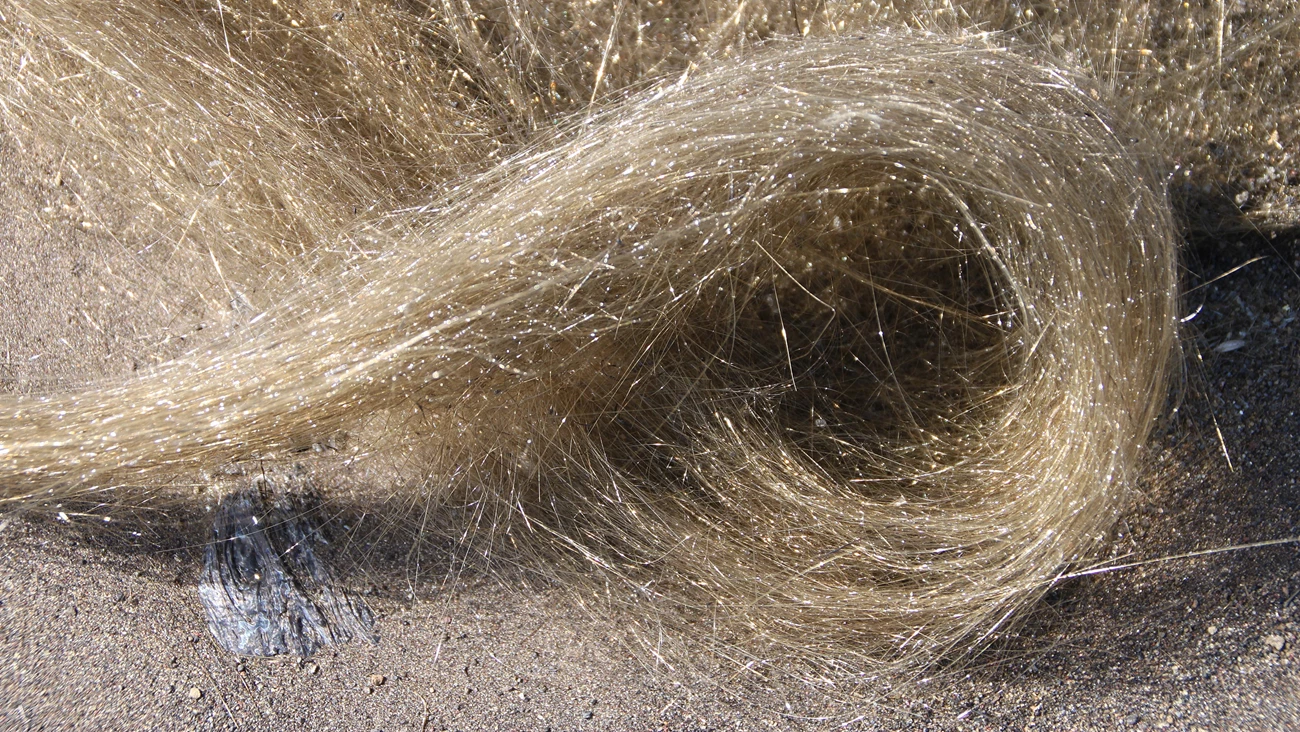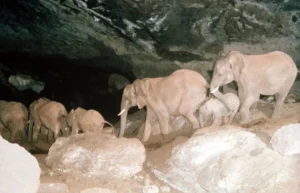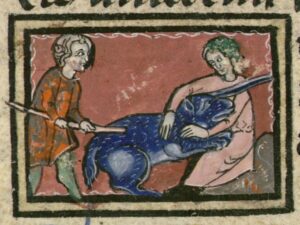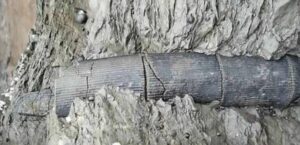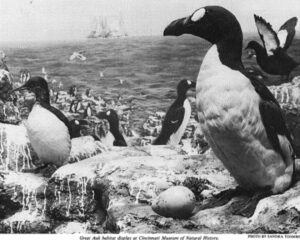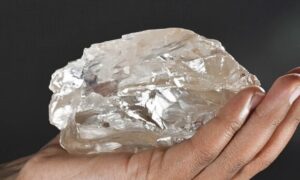In Hawaiian mythology, a fearsome and unpredictable goddess created the islands. If she’s near and stirring up trouble, you’ll find long, tangled strands of golden, hair-like material piled up along cliffsides and roads. These golden strands, called Pele’s hair, are actually a rare type of volcanic glass.
Background
Kīlauea is one of the most active volcanoes in the world. The landscape around it shifts constantly because of the regular eruptions. The volcano creates new lakes, reshapes the coastline, and produces volcanic glass.
When Titus Coan, a 19th-century missionary from New England, watched volcanic activity form Pele’s Hair, he floridly described its hellish birth:
Awful seething and roaring, striking this mural barrier with fury, and with such force that its sanguinary jets are thrown back like a repulsed charge upon a battlefield, or tossed into the air fifty to a hundred feet high, to fall upon the upper rim of the pit in a hailstorm of fire.
Pele’s Hair forms under very specific conditions. It occurs when low viscosity or runny basaltic lava is violently ejected into the air from lava fountains or lakes. Then, high winds and explosive pressure from the eruption tear the blobs apart mid-air. This stretches the lava into long, thin strands of glass when rapidly cooled to the right temperature. Geologist Katryn Wiese compares the process to how glassblowing works, when hot air is blown into the glass to stretch it out, albeit not in such a dramatic fashion.
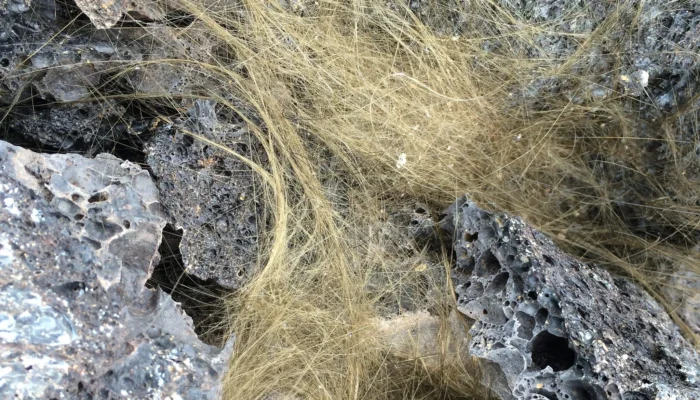
Pele’s hair. Photo: Public Domain
When the volcanic craziness dies down, Pele’s hair appears on the ground as fragile golden strands, which are light and sharp. They can be up to two meters long but only a millimeter thick. In the wind, they accumulate, forming small clumps, tumbleweeds, or carpets. It is not uncommon to find the strands gathering on telephone poles and antennas many kilometers from the volcano.
But Pele’s hair is not the only peculiar volcanic material in Hawaii. Pele’s tears are droplets of volcanic glass formed during an eruption. The tears undergo the same process, with small lava blobs solidifying under the same conditions. However, these lava blobs are not stretched out.
Look but don’t touch
National park authorities have issued countless warnings to the public about the hair. “The fragile hairs easily break into tiny pieces, and no one wants glass splinters in their eyes or skin that keep breaking when you try to pull them out. So, leave the hairs be if you find them,” the U.S Geological Survey advises.
Many people compare the hair to fiberglass, which can cause respiratory and skin problems when mishandled. Weather stations routinely include the appearance of Pele’s hair in their forecasts, particularly when there are high winds. Locals need to secure their water supplies because the hairs can contaminate them.
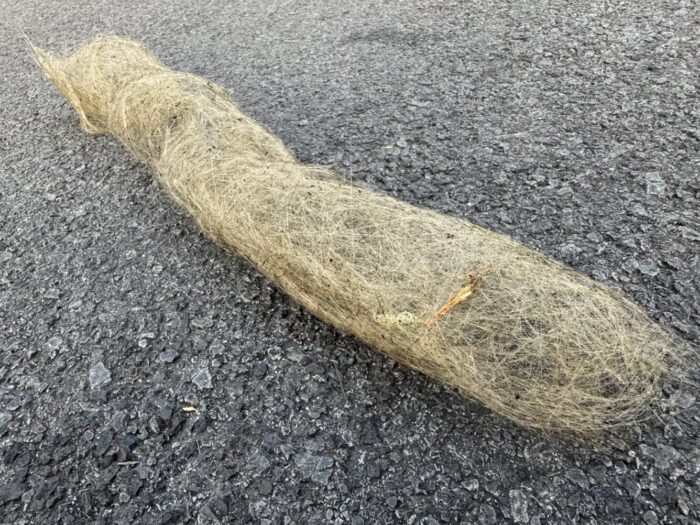
Pele’s hair. Photo: K. Mulliken/USGS
Though Pele’s hair is mostly associated with Hawaiian volcanoes, volcanoes in Nicaragua, Iceland, Ethiopia, and Italy sometimes produce the same phenomenon. In Iceland, Pele’s hair is called witches’ hair. In 2024, hair formed by the eruption of a volcano in southern Iceland rained onto the town of Reykjanesbær. The hairs caused minor injuries to some people.
Where geology and mythology collide
To understand the significance of Pele’s hair in Hawaii, we must acknowledge that for many locals, geology and mythology go hand in hand. Here, all volcanic activity has to do with Pele. Known as “she who shapes the sacred land,” Pele is a revered goddess. She is passionate and hot-tempered, creating the islands with her vast power as she searched for a home.
However, she is also a great destroyer who uses her powers to wreak havoc. She is said to dwell in Halemaʻumaʻu, the great crater at the summit of Kīlauea, where her spirit dances in the lava lake. Pele’s hair is the goddess’s hair.
Another missionary named William Ellis spoke about the natives offering sacrifices to the goddess, including their hair:
Numerous offerings were presented, and many hogs, thrown alive into the stream, to appease the anger of the gods, by whom they supposed it was directed, and to stay its devastating course. All seemed unavailing, until one day, the king Tamehameha (Kamehameha), as the most valuable offering he could make, cut off part of his own hair, which was always considered sacred, and threw it into the torrent.
Many years later, the king’s great-granddaughter, Princess Ruth Keʻelikōlani, offered the great lava flow of 1880 a lock of her hair to save the local towns. In Hawaiian culture, hair had divine power and was a symbol of social status.
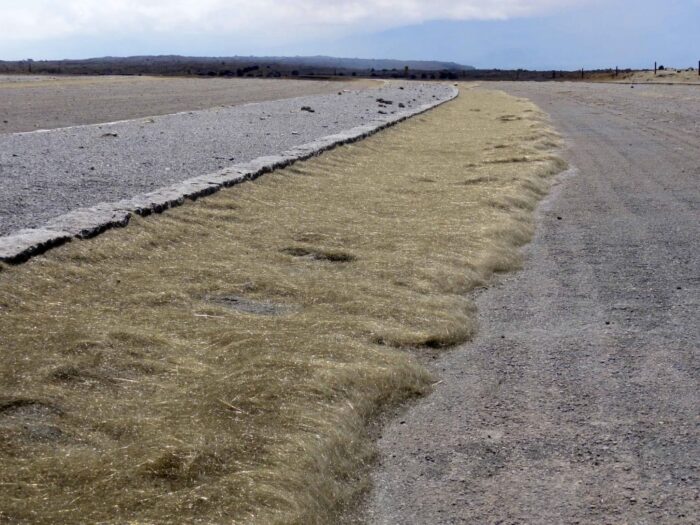
Pele’s hair covers the side of the road. Photo: HVO/USGS
Hawaiians adhere to ancient rules that prevent them from messing with Pele’s hair. Local legends state that anyone removing lava from the islands will suffer great misfortune, or “Pele’s curse.”
Various stories online detail ignorant tourists attempting to take pieces of Hawaii home. One woman, for example, pinched a lava rock while on a tour. When her tour bus driver kicked her off, she threw the rock, only for it to ricochet back and hit her in the head, leading to a trip to the hospital.
